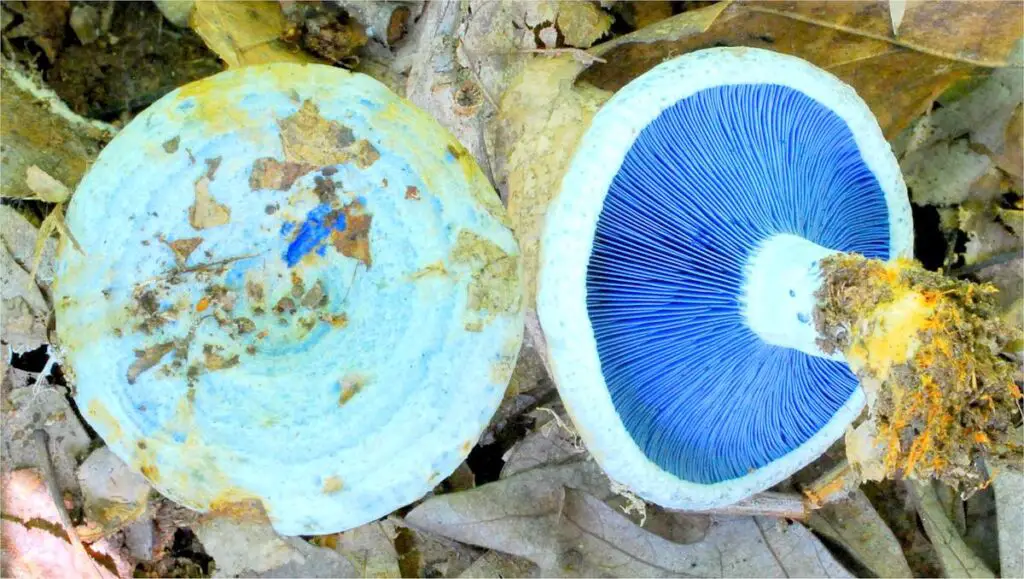The blue milk Mushroom belongs to the russula family. It is an edible mushroom and is sold in markets in Guatemala and Mexico. The description of the Blue Milk Mushroom (Lactarius indigo) will help you better recognize this mushroom. There are many mushroom varieties some are similar to it.

The Latin name for the mushroom is Lactarius indigo.
Table of Contents
blue milk mushroom: Description
The cap of the blue milk mushroom is initially convex, and later transforms into a depressed one, it may even become funnel-shaped, the edges of the cap are tucked down. Its diameter ranges from 5 to 15 centimeters. The color is denim blue, its surface is zonal, at a young age – sticky.
There are plates under the head. They can be adhered to the leg or descending. Plates are often located. The color of the plates is also denim blue, with age they brighten. When damaged, the plates turn green. Spore powder of yellow color.
The leg is cylindrical, thick. Its length ranges from 2 to 6 centimeters, while in girth it is 1-2.5 centimeters. The colors of the leg and the cap are the same, sometimes the leg may have a gray-silver tint. In youth, the leg is sticky.
The flesh is bluish, in the air it slowly acquires a green color. The milky juice is pungent, also denim-gray in color, later becoming greenish. The pulp has no smell.
We have prepared a guide on Mushroom Family and kingdom classification.
Areas of growth of blue milk mushroom
Blue Lactarius grow in Central and North America, they are also common in Asia. Blue millers enter into mutually beneficial alliances with deciduous and evergreen tree species.
Varieties of blue milk mushroom
Lactarius indigo var. diminutivus is a smaller variety of this species. The diameter of the cap of this variety is 3-7 millimeters, the leg does not exceed 4 centimeters in length, and its girth is 1 centimeter. These milkmen grow in Virginia.
Evaluation of the edibility of blue milk mushroom.
Blue millers, like the rest of the genus, are suitable only for salting. Due to the fact that the pigeon milkmen require additional processing, they are not very popular among mushroom pickers. They must be soaked to remove the milky juice and get rid of the bitterness. To do this, they are soaked in cool, salted water for several days, while the water is changed from time to time. Then they are boiled, and after that, they are salted. Check detailed guide on Most Expensive Mushroom In The World.
Benefits and harms of blue milk mushroom
As part of the blue milkers, there are useful trace elements – sodium, potassium, and iodine. But if these mushrooms are improperly collected and cooked, they can be harmful to health. You can not collect blue milkers near roads and businesses, as they absorb toxic substances from the environment. And if milkmen are not prepared enough, then they can cause indigestion.
Similar types of blue milk mushroom
- Lactarius chelidonium has a bluish-gray or yellowish cap. And his milky juice is brown or yellow;
- Lactarius paradoxus also has a blue milky sap, but differs in purple-brown or red-brown plates;
- Lactarius quieticolor also has blue flesh in the cap, but the flesh is red-orange or just orange in the stem.